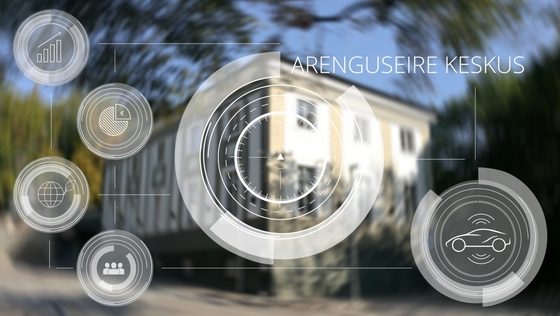The proliferation of atypical work needs to be gauged
The wider proliferation of telework and platform work along with the new virtual professions increase the work-related costs and risks for the employees, which were traditionally shouldered by the employers.

The traditional form of work still prevails in Europe and Estonia – a full-time contractual job for one employer. At the same time, a number of studies suggest that untraditional forms of work, short-term work and on-demand work are becoming the new norm on the labour market.
This year, the Foresight Centre is conducting a study on the future of the labour market, analysing the spreading and impact of virtual work. Expert of the Foresight Centre Johanna Vallistu said that a distinction is currently made between three major types of virtual work: telework, platform work, and emerging virtual professions.
The one to grow the fastest over the last few years has been platform work, which is carried out at a web based platform over the internet, or in a real life environment. A study conducted in seven European countries showed that 9–22% of the population has done platform work. Up to 10% of the working-age population is doing platform work weekly, and up to 5% makes at least half of their income from this. No studies have yet been conducted in Estonia to gauge the proliferation of platform work, but it is clearly gaining importance.
“Work mediation platforms have quickly gained popularity in Estonia, and platform work can be viewed as a flexible option which has become a lifestyle choice for some, and unavoidable for others. Studies have shown that platform work is particularly popular among the people whose income from their main job is not sufficient,” Vallistu explained. The best known platforms in Estonia are Taxify, Uber, Wolt, and GoWorkaBit.
A new trend in the labour market is the emergence of new virtual professions, such as web moderation, money trading in web games, or professional online gambling. The new virtual professions are only just starting to be discussed and studied. Vallistu emphasised that it has become more difficult to make a distinction between virtual and regular work because the vast majority of jobs require the use of ICT. Another aspect is the blurring of lines between work and nonwork, that is – between work, game, and pastime.
“In the case of virtual work, people are often not able to plan their working time or the size of their income. The workers also increasingly often need to take responsibility for their own working conditions, and workplace health and safety. While it used to be the employer who was obliged to provide everything necessary for work, now the self-employers need to provide everything themselves. This heightens the risks to occupational health because virtual work is related to a number of health risks, such as the wrong sitting position, the lighting of the working space, etc.,” Vallistu listed the main risks connected to the spreading of untraditional forms of work. The study shows the need to start collecting statistics on the growing popularity of platform work in Estonia, just like today we have arrived at regularly monitoring telework.
This year, the Foresight Centre is carrying out a study on the future of the labour market, with the objective of understanding the developments of the labour market and the contributing factors behind these by developing preliminary studies and scenarios. Kaire Holts from the University of Hertfordshire has been commissioned by the project team to carry out a study on virtual work. The research project on the future of the labour market will be completed by the end of this year.
The full English text is accessible on the home page of the Foresight Centre.
Latest news
-
10.11 2025Report: Estonia could learn how to control healthcare costs from the Netherlands
The expenses of the Estonian Health Insurance Fund significantly exceed its revenues, and the accumulated reserves will be depleted in the next five years. Other European countries in the same situation have cut healthcare services and increased people’s co-payments. According to the Foresight Centre’s new short report “Other countries’ experiences in managing healthcare budget deficits”, both solutions have worsened public health and deepened inequality.

 An independent think tank at the Riigikogu
An independent think tank at the Riigikogu